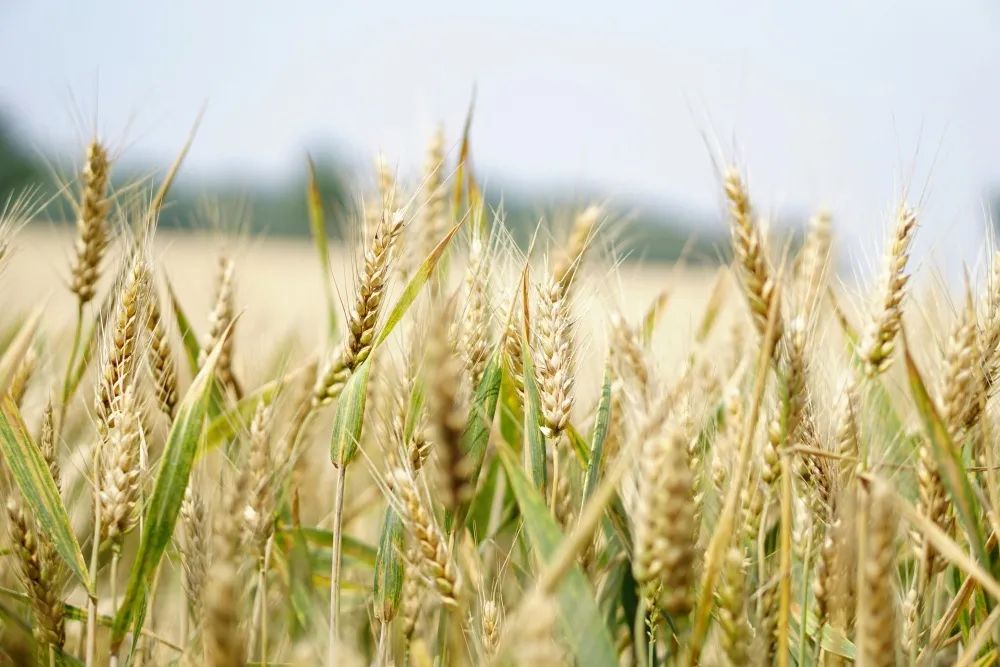
photo via Pexels
Peek at the World of Spring Wheat: Montana's Flourishing Agricultural Industry
May 9, 2024
by brittany schimke
"O beautiful for spacious skies, For amber waves of grain, For purple mountain majesties Above the fruited plain!" Although initially written about the Colorado Rockies, the lovely words to America the Beautiful paint a beautiful picture of our views in South Central Montana. Picture-perfect vistas of sprawling mountain ranges like the Beartooths and Pryors provide the backdrop to our flourishing agricultural industry.
Nestled amidst this natural splendor are the fields, not just any fields, but the proud producers of wheat, hay, barley, corn, and sugar beets. With a staggering 5-6 million acres dedicated to wheat production alone, our region is a veritable breadbasket, quite literally.
Sowing the Seeds of Success:
Wheat reigns as one of the top 10 crops in our fertile expanse. Nearly half of the wheat grown here is known as spring wheat. Planted between April and June, these golden grains begin to grow once soil temperatures reach a cozy 40 degrees Fahrenheit. Each seed is planted 1-2 inches into the ground. With 18 to 24 inches of water, courtesy of Mother Nature, and a little TLC from farmers, these wheat fields become a testament to agricultural prowess. Come fall, they yield the bounty that will bless our tables with delicious, nutritious food.
Montana's magic lies not just in its scenery but in its soil and weather, a perfect cocktail for cultivating top-tier wheat and barley. Top spring wheat varieties are Vida, Reeder, Dagmar, SY Longmire, and Lanning, which are grown with care right in our backyard. They boast unparalleled quality. Their robust gluten and high protein content make them stars in the baking world, elevating everything from crusty loaves to fluffy pastries. Montana's spring wheat is popular among flour millers as it enhances wheat blends and produces the high gluten-strength flour required for bread making.
Nutritional Nuggets:
Wheat is a nutritional powerhouse. Low in fat and bursting with carbohydrates, it's an excellent source of energy. Typically, one slice of whole wheat bread contains 1.5 grams of dietary fiber, keeping our digestive engines running smoothly. Despite not being a complete protein, wheat still outmuscles corn and rice, making it a cornerstone of balanced diets.
Wheat is a host to several vitamins and minerals, such as Thiamine also known as vitamin B1, Niacin, Iron, and zinc.
From Field to Fork:

Photo by Brittany Schimke
Wheat is just one of the many quality food sources our region of Montana is known for growing, along with quality beef, safflower, potatoes, lentils, and many grains. Next time you spot a farmer or rancher in the fields, pause and ponder the bounty they bestow upon our grocery store shelves.
Cultivate Your Curiosity:
While wheat might be best left to professional farmers to grow, don't shy away from flexing your green thumb. With planting season fast approaching, why not dabble in growing your own fruits and veggies? Billings is located in growing zone 5a and has a great climate to start your summer garden. Plants like tomatoes, cucumbers, peas, and peppers can be excellent beginner plants for growing. Also, cultivating your own garden can give you a deep appreciation for our neighbor farmers and ranchers' work.
In south-central Montana, beneath our spacious skies, and amidst our amber waves, lie rich fields of agriculture. Our farmers and ranchers, stewards of the land, pour their sweat and soul into every harvest. By delving into the story of wheat, we honor their dedication and deepen our connection to the food on our plates. And perhaps, in tending our own gardens, we sow seeds of gratitude for the abundant gifts of the soil.
Never miss an issue, check out SLM's digital editions here!





